Chilblains were part and parcel of an Irish childhood for many when I was growing up.
Memories of red, itchy, inflamed toes still linger for my generation, but painful, chilblain flash blacks still haunt the generation that went before me.
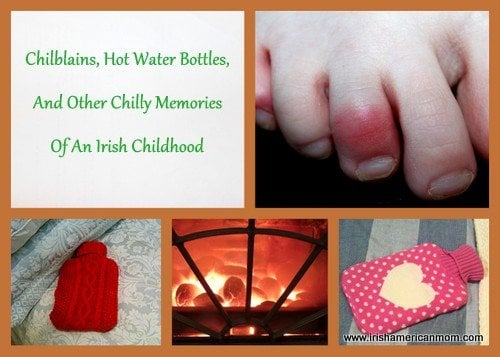
Table of Contents
What is a Chilblain?
Now many of you are probably wondering what on earth a chilblain could possibly be. The word is not feared here in America, with very few even being familiar with the term.
One cold winter's day I was reminiscing with an American friend, and asked her if she ever suffered from chilblains as a child. A flash of fear spread across her face, as if I had asked her if she ever had the plague. She never before had heard of the dreaded CHILBLAIN, but the very word put the fear of God in her.

She was relieved to hear they're non-contagious, small, itchy swellings on the skin that occur as a reaction to extremely cold temperatures. I have only ever seen chilblains of the toes, but apparently they can appear on fingers, heels, ears and even on the tip of the nose. OUCH!
Suffering From Chilblains As An Irish Child
I was one of the lucky ones in Ireland in the late '60's and early '70's. My little piggies seldom succumbed to the frosty bite of winter's chilly air, but my poor sister often complained of burning, itchy toes that swelled and turned bright red. Sometimes her poor little piggies were blistered by these notorious chilblains.
Chilblains seldom occur in America, because despite the cold winter temperatures, the air is dry, unlike the cold, damp conditions found in Ireland and the United Kingdom during the winter months. Chilblains were common in my youth, in the days before we had central heating.
Now it's time for a little technical explanation ... after studying physical therapy, I just can't resist sharing the medical rational behind this winter discomfort.
What Causes Chilblains?
Chilblains are caused by an abnormal reaction of blood vessels to the cold. As the skin gets cold, blood vessels near the surface get narrower, and then when suddenly exposed to intense heat, the blood vessels near the skin surface grow wider too quickly, and the blood leaks into the surrounding tissue, causing none other than, a chilblain.
Warming our freezing toes by an open fire was not a good idea.
Allergy to cold and hives are two diagnoses some American readers have reported, but I think a differential diagnosis of chilblains might be indicated in some cases.

Does anyone remember coming in from the freezing rain, discarding coats and scarves by the door, and ripping off wet shoes and socks to wiggle those freezing piggies by the fire? If you answered yes, then you must be IRISH.
Little did we know we were creating the perfect conditions for a CHILBLAIN ATTACK.
I remember sitting by the cozy fire in the living room, my legs all toasty and warm, mottled red and white from the heat of the fire. We always said we had the ABC's on our legs when we overheated our skin.
I remember trying to convince myself I didn't need to go upstairs to the bathroom, afraid to face the arctic air of the hallway. You see, when I was young, most houses were heated by an open fire, with no central heating. The living room was the only comfortable room in the house.

Hot Water Bottles
At night we snuggled under a layer of wooly blankets and brought our favorite friend to bed - the hot water bottle, hoping to ward off those dreaded chilblains. In my day, if our hot water bottle was too warm at first, we wrapped it in a towel, but nowadays they come with all kinds of fancy covers.
Apparently wearing socks in bed is a better way to prevent chilblains. Our hot water bottle solution only exacerbated the situation, creating more exposure to extreme temperatures. Little did we know! And oh, how I loved my pink hot water bottle. It was made of pink rubber, and had no fancy knitted heart like this modern day hot water bottle pictured below.

Chilblains are now practically a thing of the past. Central heating has ensured most houses have a nice warm, dry atmosphere promoting chilblain free Irish feet.
Bed Warmers
A few years ago when I took a guided tour of Glenveagh Castle in County Donegal, I learned a neat little fact about its previous aristocratic inhabitants.
Servants were tasked with warming the master's bed before he retired for the night. No, the poor servant didn't have to jump in and lie there for a while to warm the sheets.
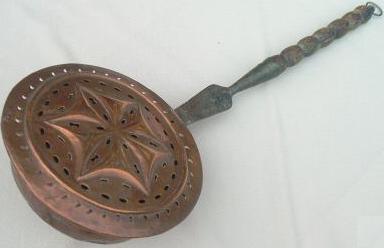
The task of heating the sheets was accomplished using a special metal bed warmer, which consisted of a copper container, shaped a little like a frying pan.
The pan was filled with hot coals from the fire, covered with a finely perforated lid, then placed under the bed covers. A long handle allowed the servant to swish the hot pan over and back across the sheets without burning them. This process also dried out damp beds. I wonder if the gentry suffered from chilblains?????
Anyway, as I snuggle under my comforter each evening, warmed by the soothing warmth of my forced air heating system, I wiggle my pain free toes, and count my blessings. It's lovely to live in a chilblain free age.
And so, I hope all my American readers have learned a little bit about our Irish winter time ailments of days gone by, and that my Irish readers won't have any chilblain infested nightmares after reading this little post with a trip down a chilly memory lane.

Slán agus beannacht,
(Goodbye and blessings)
Mairéad -Irish American Mom
Pronunciation - slawn ah-gus ban-ock-th
Mairéad - rhymes with parade
Here are some more ramblings you might enjoy...
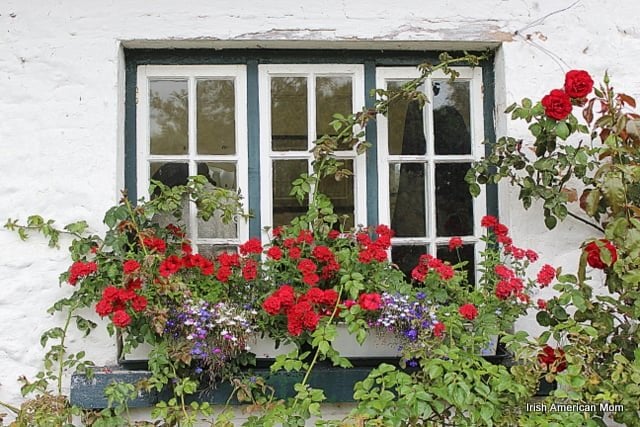
Furze - The Yellow Flower of the Irish Landscape



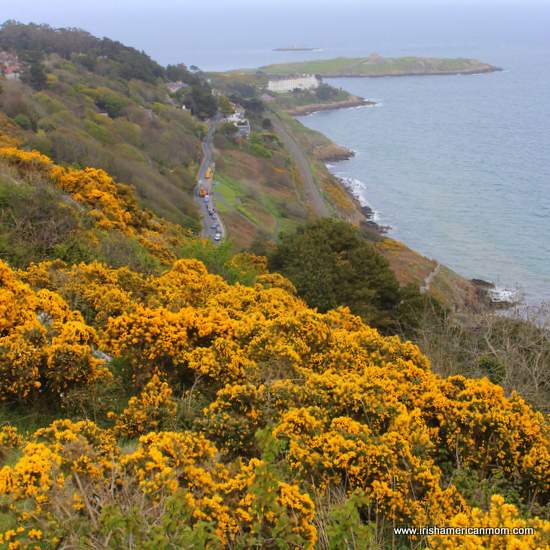
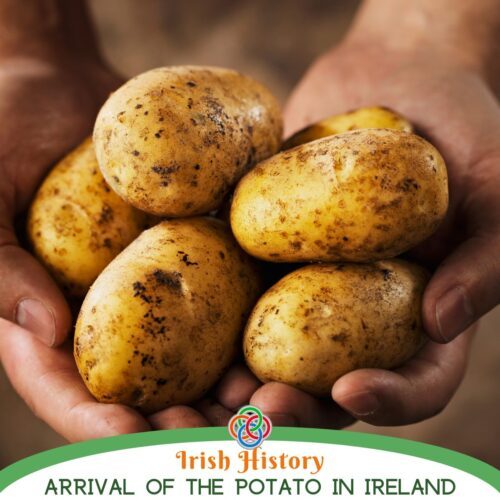
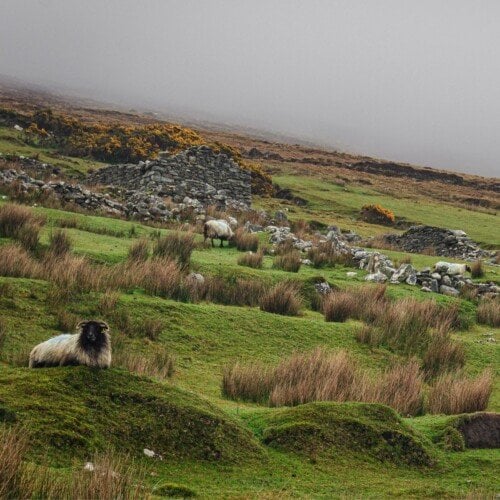










Maureen O Hanlon
Mairead you are funny, you brought back great memories to me and not so great when i would get chilblains as a child :), i used to get them and they were sore, but I cant tell you the cure my mother had for them its too funny :):)but it always cured them for me ha, ,
I love your stories.
Maureen
Irish American Mom
Hi Maureen - I'm glad you enjoyed my little ramble about chilblains. I know your Mom's cure for chilblains - it's one I often heard recommended, but we'll keep it as our little secret 🙂 It probably wouldn't be approved of today 🙂
All the best, and thanks so much for checking out my blog post.
Mairéad
brian@irelandfavorites
Another thing that is completely foreign to me, it's funny how the things we dread most stir the most vibrant memories, here's hoping your toesies stay safe and warm,
Cheers,
Brian
Irish American Mom
Brian - Little did you know a lesson in red, raw Irish toes awaited on my blog today. I'm glad to hear you have never suffered from a dreadful, burning chilblain. They're horrible. I only ever remember having one once when I was about eight, but my poor sister suffered terribly.
All the best, and here's hoping for many more chilblain free winters to come.
Mairéad
brian@irelandfavorites
Probably the balmy Boston winters kept us chilblain free.
Irish American Mom
Brian - Those balmy Boston winters have to be experienced to be believed. My late aunt was a nun in Andover, Mass. I remember visiting her in February one year and nearly freezing my nose off when I got out of the car. Lucky my Irish nose didn't develop a chilblain.
All the best,
Mairead
Mariana
I still get chilblains now and then. Not as much as when I was a child, though.
My dad used to warm up a brick, wrap it with newsprint and put it under the blankets to warm the bed. Not as fancy as a metal bed warmer, but it worked.
Irish American Mom
Mariana - I'm glad to hear you don't suffer from chilblains as much today as when you were a child. Here in the northern hemisphere we forget that winters can be very cold in Argentina too. I like your father's resourceful trick for warming up your bed. I love reading everyone's comments and learning all the little tricks from the past for dealing with the challenges of life.
Best wishes,
Mairéad
Therese McAllister
Oh boy Mairead you brought back painful memories
Of when I lived in Ireland. When visiting family in Galway
Without central heating I would have painful raynauds with
Chilblains. Yikes!
Thankfully most homes have central heating today
And plumbing!
Irish American Mom
Therese - So sorry I evoked such painful memories, but I think looking back helps us be thankful for all we have today, and to realize that life has got so much easier over the years. And oh, how I agree with you about that plumbing!
All the best,
Mairéad
Maureen O Hanlon
Mairead you are right, it definately wouldnt be approved today, all the old cures were great though, A cure for worts was the white milk inside the stem of Dandelions, a cure for a whitlow was a little finger sewed out of cotton and hot milky bread put into it and then my finger was stuck into it 🙂 but it cured it, a glass of water with half tsp breadsoda for heartburn, and that worked too 🙂 Senna tea for wormdose and that worked too but was yucky 🙂 Scoths emulsion and codliver oil for a tonic and I never remember being sick or having antibotics, rain water for washing my hair gathered in a barrel under a shoot, hot lemonade with an aspro in it for a cold, goodie in a cup made of milky tea and sugar with bread torn up and put into it and more sugar sprinkled on top, yummy 🙂 cup of hot milk with butter and pepper in it for a cold :):), , just a few things that came into my head when I was talking about the cure for childblains :):),
Maureen, 🙂
Irish American Mom
Maureen - You're giving me wonderful ideas for another blog post or multiple posts - all the old wives tales and herbal cures from the past is a great topic for discussion. Another one I heard of for warts was to take the scum off the edge of the pot when boiling potatoes and put it on the wart, and a bread poultice for infected blistered fingers was another tried and trusted remedy. We could probably talk for hours and write a book on the old ways. Have you every heard of Biddy Early from County Clare? She was supposed to have had the cure for many an ailment. I'd love to have time to do a little research on her.
Anyway, lovely to hear all those tips from your younger days. Our ancestors were wise in their ways.
Best wishes,
Mairéad
Maureen O Hanlon
Thank you Mairead, ill be looking forward to your next blog on old cures and old wives tales, yes i had many a poltice on my fingers for whitlows, another one my mother used to do was if i had a sty in my eye she would make the sigh of the cross with her gold wedding ring over my eye touching my skin and sure enough the sty dissappeared, and as you know bread for rubbing out pencil mistakes in my school copy, there was another one about worts, was to rub the wort with a stone and give it to the first man you met with a grey horse and the worts dissappeared, that poor man on the grey horse must have been covered in warts :):). ill think of more later and ill tell you. have a good day 🙂 oh yes butter for getting off hot tar melted by the sunshine, I used to love sticking my fingers into the hot bubbles of tar on the road Ha,
Maureen,
Irish American Mom
Maureen - I laughed when you mentioned how you loved sticking your fingers in tar bubbles - I was a holy terror for doing that too, and I'd streak it all over my trousers trying to rub it off. The poor man on the gray horse must have been some sight alright, with all those warts being passed on to him.
Looking forward to hearing more old cures when you remember them.
Have a lovely day,
Mairead
Penny Wolf
I remember coming in from the cold and wanting to run hot water on my fingers.
I was told by my Mother not to because it wasn't good for me. No questions asked
but I never understood why. Thank you for the explanation now!
Irish American Mom
Hi Penny - Our parents had so much knowledge we never really understood. I often regret I didn't ask my two grandmothers more questions about the way they did things and why. I'm so glad this post helped explain your mother's wise ways.
All the best,
Mairead
Cheryl Barker
Mairead, I'd actually heard of these before through a missionary friend in China. Many of his students lived in unheated conditions and suffered terribly from these. They sure look and sound painful.
Irish American Mom
Cheryl - it's amazing to hear that chilblains are an issue in many cold, damp climates. I would never have thought they might be a problem in China, but without adequate heat in winter they must be a problem everywhere.
All the best,
Mairead
Maureen O Hanlon
Hi, Mairead I smile my self when i remembered sticking my fingers in the tar 🙂 another thing my mother got me to do was brush my teeth in breadsoda every day we probably couldnt afford toothpaste or else she didnt believe in it 🙂 and I still have all my teeth many decades later 🙂 and if I got hives she would make up a paste of breadsoda and rub it on them( but id say they were fleabites ha just a posh way of saying hives) and you could track me all over the place as when it dried there would be bits falling of everywhere ha, , like you Im so sorry I didnt ask her to write them down for me, but you see I thought she would live forever 🙁 now im racking my brains to try and think of the old cures 🙁 another one boiled milk for diarrhoea in babies, oh and another very good one was if I got nettle stings Mother would find a bunch of dockleaves and dig deep down into the centre of them and find the sticky juice that was on the heart of it and she would pull her fingers up along the stems and bring the sticky juice with her and rub it on the nettle stings, and the pain would go away 🙂 she used to call them dogleaves ha. Now i had to smile sometimes if i was with friends and they got a sting from nettles they would run over and pull a big outside leaf off the dockleaves and rub it on to the sting, they only had half the cure right, ha, it was deep down in the middle of the dockleaves the cure was :). . if I think of more later Mairead ill tell you,
have a nice day
Maureen 🙂
Irish American Mom
Maureen - We used to say "docken in, nettle out" over and over as we rubber our nettle stung leg with dock leaves. Little did we know we had to dig for the sticky juice for the real cure. Loved reading all your cures here. Have a lovely weekend,
Mairéad
Maureen O Hanlon
Thank you Mairead, I had to smile at the way you would say the manta to get rid of the nettle sting,
another cure for worts was get a bit of raw meat and rub the wort on it and then go outside and hide the bit of meat in a cavity in some wall and as the meat was rotting the wort dissappeared :):), another one was if you had a bad head cold get a cotton hanky, long forgotten id say , its all paper ones now, anyway if you kept heating the hanky to the fire and get it very hot and keep putting it up to your nose the running stopped, and it works 🙂 and of course alcohol for a cold sore :):) and for an ulcer a glass of cooled boiled water first thing in the morning and it really works and is also great for the system, and for a sore throat gargle with salt and hot water.
Have a good day
Maureen
Irish American Mom
Maureen - You're a wealth of information for sure. I love reading all your cures from the past. I never heard about the hanky trick for a runny nose. That's well worth trying when the kids have colds in the winter. Once one gets a cold, they all do, and when they keep rubbing their little noses their poor skin gets all red. This could be a great prevention for Rudolph noses in winter.
All the best,
Mairéad
Maureen O Hanlon
Thank you Mairead,
ah mine used to be the same one gets a cold and they all got colds, it has to be a real hanky 🙂 and it really works, if they will let you do it 🙂 If I could catch Rudolph I would show him the trick, but hes too fast and quite, all i see of him in the morning is the carrott ate and dirt on the floor Christmas morning 🙂
have a good day.
Maureen
Irish American Mom
Maureen - Rudolph's been knows to spill his water and leave bits of carrots on our floor.
All the best,
Mairéad
Rich
Ah yes, chilblains were a feature of my childhood, too. Didn't realize central heating is the reason my children have never experienced them. Thanks for the explanation.
Irish American Mom
Rich - Chilblain free winters were part of my poor sisters prayers. I can only imagine how my parents' generation suffered from them. My mom told me she used to get them on her fingers and shins. Ouch! Thankful for the blessings of central heating.
All the best,
Mairead
Maury
Love this post Mairead! All the old remedies worked very well! I have continued to use the gold ring to rub on styes, and it works great! Another remedy I remember from my grandmother was for blood poisoning. She would go to the barn and get a bucket of horse manure. You just put the affected part...usually a foot..In the manure for 15 minutes. And the blood poisoning went away! Sounds awful, but it worked! We did get chilblains a few times. Not very often though! I can't wait for further home remedies posts!
Irish American Mom
Hi Maury - Thanks for sharing these old remedies you remember from your grandmother. I must get working on a home remedies post. I think that topic could be the basis for a whole series of posts.
All the best,
Mairéad
Bernadette
Your blog brought back painful memories for me Mairead! I used to suffer terribly with chilblains every winter, they were the bane of my life! I was the only child in my family who suffered from them and they were so itchy it drove me mad. I have a tendency to poor circulation in my feet so was probably prone to them. That and the fact that we walked to and from school in all weathers so feet would get wet and cold as winter boots were leather and would get wet through in rain and snow,, waterproof ski boots were unheard of at the time unfortunately. I think the fact that we are driving rather than walking now and our feet rarely get wtr, plus central heating providing consistent temperatures, means the conditions for chilblains don't really exist now. Thank God!!
My mother used to get a pot of green gunk called Snowfire from the chemist. It was really effective in soothing them and taking away the terrible itch. I wonder if anyone else has heard of it. I never ceases to amaze and amuse me the conversation you can derive from the simplest and most unlikely topics. I love your ramblings, more power to your pen!
Bernadette x
Irish American Mom
Hi Bernadette - It sounds like this post stirred some painful chilblain memories for you. I did get a few chilblains as a child, but never suffered as badly as my sister. And my mother tells stories of terrible chilblains on her fingers and toes during her childhood in the 1940's. I never heard of Snowfire, that miracle green salve your mother got from the chemist. I'll have to ask my mother if she every heard of it.
I'm so glad you enjoy the crazy topics I like to write about. I suppose we could say, this is not your typical blog. And here's to many more conversations over the coming weeks and months. Thanks as always for stopping by to share your childhood stories.
Best wishes,
Mairéad
Juliene
Hello I am Julie and I reside in Australia,
My 99 year old Mum was the youngest child born to Irish parents, but she was raised in Scotland and eventually she migrated to Australia in 1939 bringing with her more than a few old Irish ways. As a kid growing up in the 1950's I suffered from chilblains on my feet, and when ointments failed to bring relief to my sore, swollen feet, my mother would douse my feet with methylated spirits and then strike a match to ignite the metho. This of course produced flames over my chilblains, which were meant to singe the itch off. I would smother the flames with a thick towel before my skin got burned and blistered. I can't recall if this treatment actually relieved the chilblaines or not as I was on a child at the time. Can anyone tell me if they have heard of this strange old chilblaine cure before?
I look forward to hear from you,
Julie
Irish American Mom
Hi Juliene - I have not heard of this method for dealing with chilblains before, but I'm a child of the 60's and many of the old ways were no longer used. I must ask my mother if she ever heard of this technique. Perhaps a reader will find this comment and be able to add to our little discussion of chilblains. There are many old cures of which the modern generations are unaware. Perhaps it might be a good topic for a blog post. Thanks so much for stopping by.
Best wishes,
Mairéad